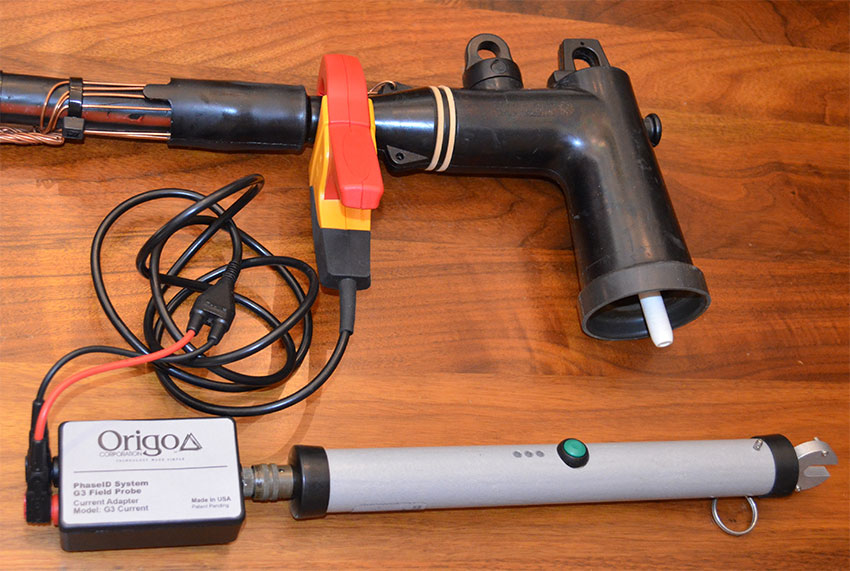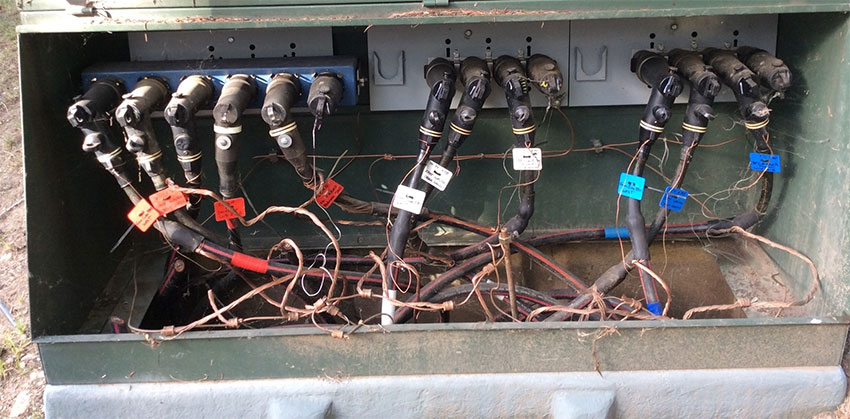G3 Current Adapter
The G3 Current Adapter (Patent Pending) has been recently introduced and greatly enhances the benefits of the G3 Field Probe by expanding phase identification to current sources where electric fields are not available. This includes URD dead front elbows, 3-phase URD feeder cables buried in a trench, and underground lead shielded feeder cables.
However, the most important benefit of this adapter is for determining and tagging energized elbow connectivity.
Underground Residential Distribution (URD) cable is used to distribute electric power (for example 7200 VAC) via underground cable. Typically, a URD cable is buried between junction cabinets and/or pad-mount transformers where it is terminated on both ends using load break elbows. The elbows connect to elbow bushings inside the cabinets or padmounts so that the circuit can easily be opened or closed by a lineman pulling off or pushing on the elbow to the bushing using an insulated hotstick.
It is important that each elbow be tagged accurately so that the lineman pulls the correct elbow when opening a circuit. If improperly tagged, the lineman may open a live circuit causing an outage to all customers on that circuit.
Until now, there was no way to easily and positively determine which pair of energized URD elbows in separated cabinets or padmounts are connected to the same URD cable. Although line locators can trace which cabinets and padmounts are connected, they cannot determine the elbow connectivity of a particular URD cable.
The G3 Current Adapter is connected to the G3 Field Probe in place of the wand. It is used with a current clamp to convert current to a voltage that is detected by the G3 Field Probe.

This allows the system to identify the phase attribute of the elbow, determine if the elbow current is an input current or an output current, and thus accurately determine the elbow conductivity between padmounts and junction cabinets.
The image below illustrates a large cabinet in which elbow conductivity was determined.

URD ELBOW CONNECTIVITY
Instruction Manual:

